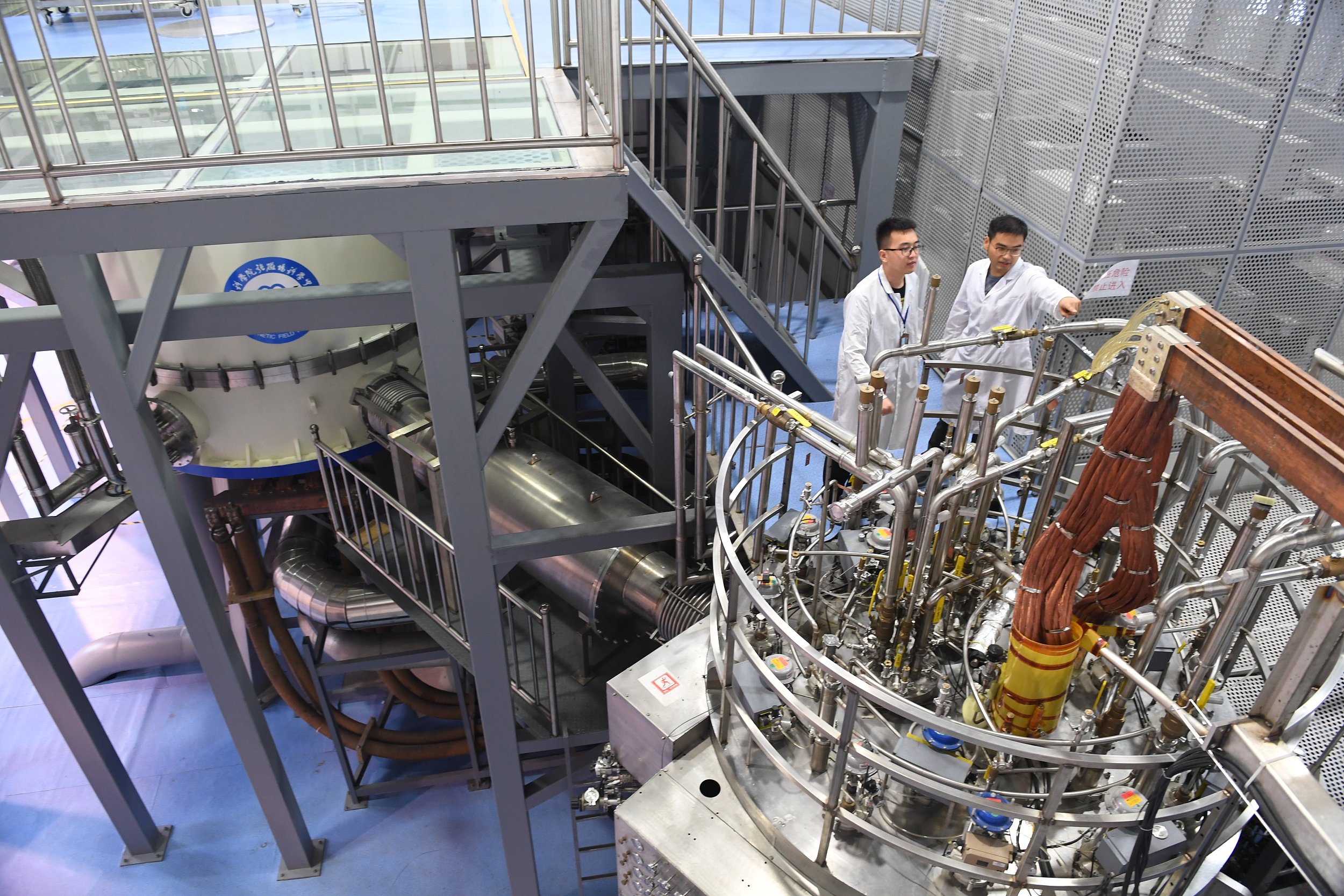China Optics Valley: A Model of Industry-University-Government Cooperation
The Optics Valley Square at the entrance of the valley in Wuhan city, central China's Hubei province. (PHOTO: XINHUA)
By LU Zijian
Beginning with a stream of light, China's Optics Valley has evolved into a zone of high-tech innovation through the joint efforts of universities, research institutes, enterprises and government.
Located in central China's Hubei province, Wuhan East Lake High-tech Development Zone, or Optics Valley, is the birthplace of China's first practical optical fiber, and now the world's largest production base of optical fiber and optical cable.
Fiber breakthrough
The first practical optical fiber was invented in 1976 by Zhao Zisen, academician of the Chinese Academy of Engineering. With only the most basic materials, Zhao managed to draw the optical fiber after three years of hard work in a laboratory of Wuhan Research Institute of Post and Telecommunications.
With Zhao leading the way, scientists in the Optics Valley gradually achieved technology breakthroughs.
In particular, scientists in Wuhan National Laboratory for Optoelectronics (WNLO) tackled challenges in brain imaging, solar cells, ultrafast lasers, laser manufacturing, optoelectronic devices and integration and data storage.
An attosecond laser of 2.6 gigawatts was realized via a new mechanism proposed by Lan Pengfei, professor at WNLO. The single pulse energy output still ranks first in the world.
Less than a month ago, the National Center of Technology Innovation for Digital Construction (NCTI-DC) and the National Center of Technology Innovation for Intelligent Design and Numerical Control (NCTI-IDNC) were inaugurated at a conference regarding sci-tech innovation in Hubei province.
The two centers are led by Huazhong University of Science and Technology (HUST) and located in Optics Valley.
Together with other national research platforms, including WNLO, they will offer strategic support to help Optics Valley go global.
Enterprises playing their role
"70 percent of parts in a smart phone need to be processed by laser. The highest precision of laser processing now reaches one hundredth of a single human hair, and we have offered nearly 20,000 sets of equipment for premium cell phone brands all over the world," said Ma Xinqiang, chairman of HGTECH, the first laser-based hi-tech company to go public in China.
The company was initially a factory affiliated to HUST before it grew into a national high-tech enterprise, and it is a prime example of the collaborative innovation of bringing together enterprises, academia, and research institutes.
With coordinated innovation efforts, a series of key technology breakthroughs were achieved by HGTECH, including fiber laser, ultrafast laser and semiconductor laser diode chips. In 2008, the company delivered its first laser welding equipment for pressure vessels, the first of its kind made by China.
The "start-ups" that emerged when HGTECH was established have also played their part in making the Optics Valley more innovative. Temperature measuring facilities using Infrared imaging were installed in hospitals, train stations and airports in many parts of China. One of the facility suppliers, Guide Infrared, owned world class technologies in terms of cooled infrared detectors.
Policy supportThe rise of Optics Valley cannot be realized without support from government policies.
In March, Optics Valley released ten policies specific to supporting the development of its laser industry cluster, especially for enterprises that research and produce raw materials, key parts, control systems and laser equipment.
Optics Valley also highly values talent. Last year, Optics Valley issued the 3.0 version of policy regarding talented personnel. The policy was designed to follow the personal development of talent in several scenarios, offering corresponding services when talented personnel study and do research in university, when they try to find accommodation during the early stage of their career, and when they need to further develop their career.
High-level talent will get funds for research and projects, rent subsidies and education options for their children. Overseas personnel can enjoy services to make their lives in Optics Valley more convenient.
Optics Valley is a miniature of national high-tech development zones all over China, and a vivid example of the success achieved by the coordinated innovation of bringing enterprises, academia, and research institutes together.



